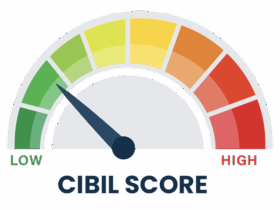Also known to some as derivative products, futures, and options (F&O) get their values from assets or commodities. This also means you can get your value from underlying assets or commodities. However, we think that futures and options are different. To be honest, they are very different from each other. Before you get started with a demat account, it is essential that you familiarize yourself with the basics of a trading account and know what futures and options are known as. To know more, let’s begin.
Knowing Between Options & Futures
Handling risk is an extremely important function within security markets. Not just that, it is a huge risk to have. Knowing how quickly things change in the stock market, a profitable deal today could become sour for you in a couple of months. Options & futures can also be understood in this context. Unlike shares or bonds, futures and options won’t help you achieve any long-term gain. They will lead to risks that occur due to usual price changes.
What are Futures and Options (F&O)?
These two are agreements used to sell and purchase assets in the future at specific prices within certain conditions. While futures and options both allow investors to buy investments within specific dates, one must be very different from the other. On the other hand, an options contract gives the investor the right to sell or purchase a futures contract to purchase the shares whereas the seller gets to sell them on a specific date of their choice in the future.
How to Trade In Futures & Options?
Educate Yourself
Before diving in, take the time to understand the basics of futures and options. There are plenty of online resources, courses, and books that explain these concepts in a beginner-friendly manner. Make sure you have a solid understanding of the terms like call options, put options, premiums, and expiry dates.
Start Small
Begin with small investments. F&O trading can be volatile, and it’s easy to get carried away. Starting small allows you to learn without risking significant amounts of money.
Practice with Virtual Trading
Many platforms offer virtual trading where you can practice trading without using real money. This is an excellent way to get hands-on experience and test your strategies before entering into the actual market.
Understand Risk
F&O trading involves leverage, which means you can control a large position with a relatively small amount of money. While this can amplify profits, it also magnifies losses. Be aware of the risks involved and only trade with money you can afford to lose.
Have a Trading Plan
Before entering any trade, have a clear plan. Define your entry and exit points, set stop-loss orders to limit potential losses, and decide on a profit target. Having a plan helps you stay disciplined and avoid emotional decision-making.
Keep an Eye on Expiry Dates
Options contracts have expiry dates, and it’s essential to be aware of them. If you’re holding options close to expiry, their value can decline rapidly. You should plan your trades accordingly.
Use Stop-Loss Orders:
A stop-loss order is a predetermined point at which you will sell a stock to limit losses. This can be a helpful tool to prevent significant downturns in your portfolio.
Seek Professional Advice
If you’re uncertain or new to F&O trading, consider seeking advice from financial professionals. They can provide guidance based on your financial goals and risk tolerance.
Conclusion
As understood above, trading in options is not rocket science. Just having a basic hang and understanding of this will help you make a good use of the financial products and trade in share market effectively. Beginners are told to educate themselves adequately and practice via virtual accounts before they actually get into real trading. Do you have a question regarding futures and options? Let us know in the comments below.












